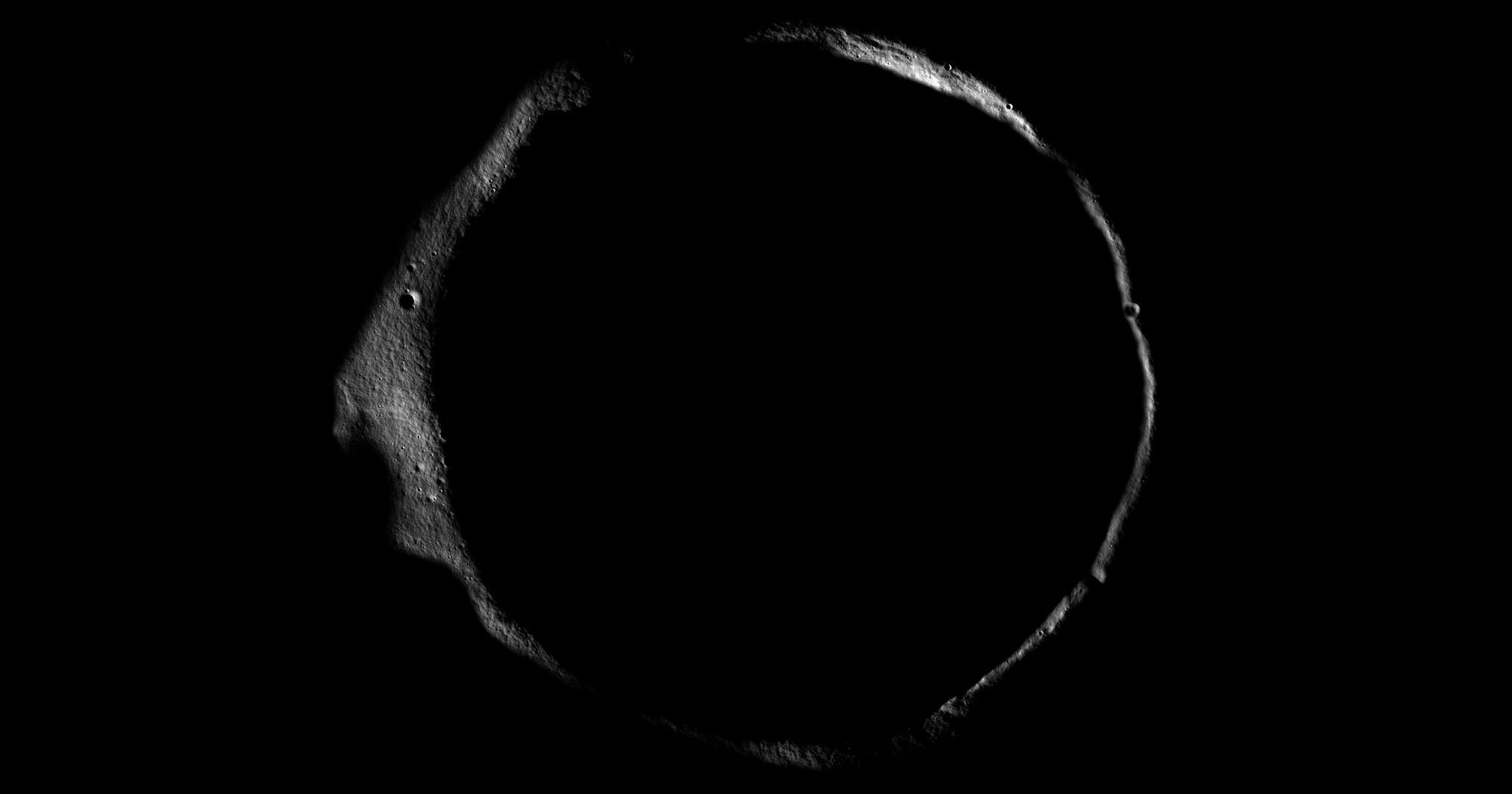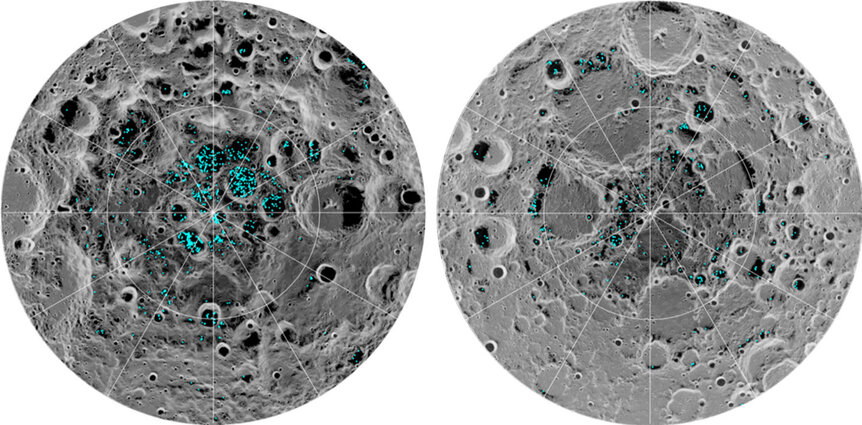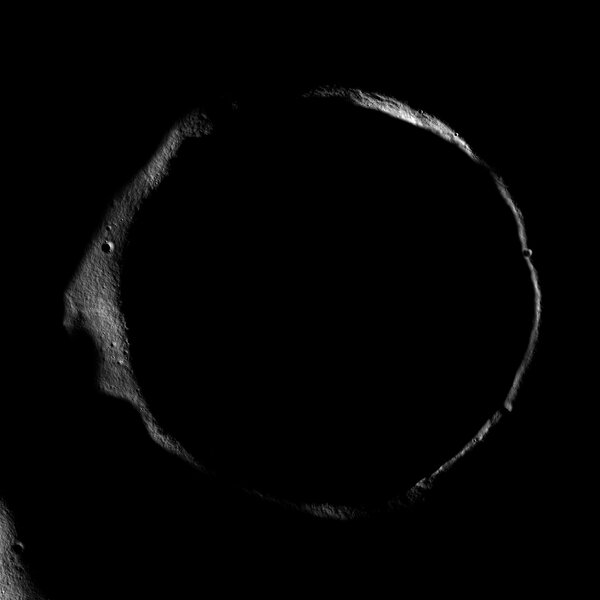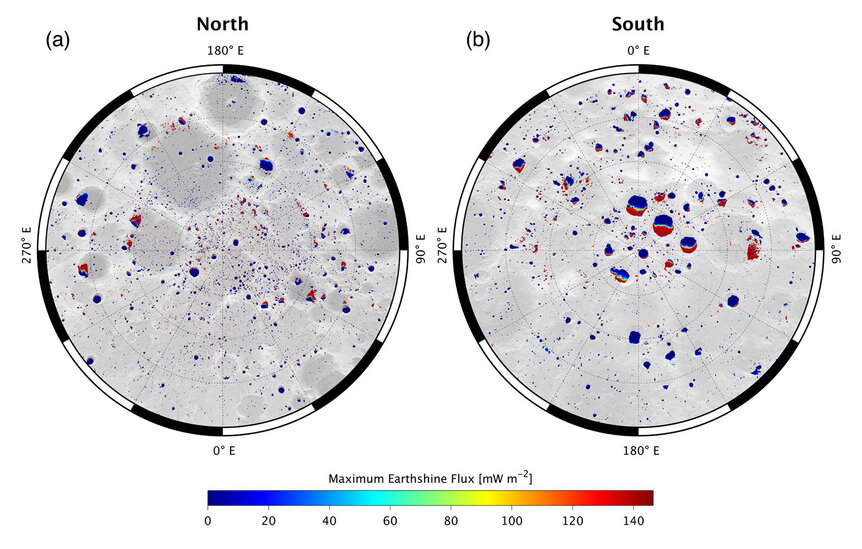Create a free profile to get unlimited access to exclusive videos, sweepstakes, and more!
Exploring the Moon's inky black craters… by the light of the Earth

It's weird to think that there's water ice on the Moon. But it's there.
Scientists started to suspect it existed before the turn of the century, though it was difficult to prove. In the 1990s several missions found key but circumstantial evidence for it, in 2009 strong evidence was found, and then in 2018 it was confirmed.
Where is this ice? At the lunar poles, in craters so deep that the low-angle sunlight never touches their bottoms. These areas are called permanently shadowed regions, or PSRs. If you were standing in such a PSR, you'd never see the Sun; it doesn't get high enough above the horizon and, more importantly, above the crater's rim. Places like these remain a chilly -160°C (-260°F).
How'd the water get there? Asteroids and comets have a lot of water in them. The idea is that when they impact the Moon, that water is spread out all over the lunar surface. In most places sunlight quickly breaks down the water molecules into hydrogen and hydroxyls (OH-), but in PSRs sunlight can't reach them. The water stays intact, and more is added slowly but inevitably from impacts. Eventually, billions of tons of water can be locked up in the bottoms of these perpetually sunless craters.
That's critical! Water is heavy and difficult to transport via rocket to the Moon. If we want to set up bases there, being able to tap into this water would be an incredibly valuable process.
But… where exactly is this ice?
Just saying "it's at the poles in crater bottoms" is true, but that's still a lot of real estate to explore. And exploring is hard; because these craters are dark it's really difficult to see what's going on in them. Sometimes sunlight reflected off the crater rims or surrounding areas feebly lights the crater bottoms. That's helpful, but even more light would be nice.
So some scientists came up with an idea: How about using Earthshine? From the Moon, the Earth is 4x wider, so 16x the area, and much more reflective than the Moon is from Earth (on average the Earth is about three times more reflective). If you're standing on the Moon, the full Earth would be 50x brighter than the full Moon as seen from Earth! The scientists were able to show that Earthshine (sunlight reflected off the Earth and onto the Moon) should be bright enough to look for deeply hidden ice.
Still, they didn't map where that light hit the Moon. If it didn't get down into those craters it wouldn't be effective. So a second team of scientists looked into this. Looking at how the Moon rotates on its axis, how it revolves around the Earth, how the orbit of the Moon changes over time, and the changing phases of the Earth as seen from the Moon (just like the Moon phases change as seen from Earth), they calculated where in these deep craters Earth light would softly illuminate them. They also calculated how much light they would see.
The results are somewhat encouraging. They found that about 40% of the PSRs in craters at the lunar north pole receive Earthshine, and 45% do at the south pole. Looking at specific craters known to have the largest PSRs, they found the three biggest have well over 50% coverage, with one as high as 60%. Not too bad.
I was a little disappointed to find out that Shackleton, a 21-km-wide crater sitting right at the lunar south pole, only gets about 17% coverage by Earthshine. It's steep, so the Earth doesn't get above the rim for most of the crater floor. The crater is named after the explorer Ernest Shackleton, and his adventures trying to reach the South Pole are the stuff of movies. I suppose it's fitting that ice at the bottom of his eponymous crater would be harder to find, given the hardships his own expeditions faced.
There are many places where we know PSRs exist, but not every spot has water. This new work may be able to help lunar satellites map these locations better to look for water ice on the surface or just below the lunar regolith (the powdery material covering the surface made up of shattered rocks from micrometeorite impacts and rocks eroded by severe temperature swings during the Moon's day/night cycle). NASA is also planning on sending a rover called VIPER (Volatiles Investigating Polar Exploration Rover) to look for ice directly (including drilling into the surface). That's targeted to land in December 2022, though I suspect the coronavirus pandemic may delay that.
I love the idea of a human-operated scientific base at one the Moon's poles. They could install rotating solar panels at the crater rim that face the Sun all the time to provide power. And the water they mine there could be used for drinking, protection from radiation, and even for rocket fuel!
I wonder when some human will live there, wrapped in inky blackness except for the softly glowing blue-green light from their home planet, low in the sky, almost 400,000 kilometers away?





























